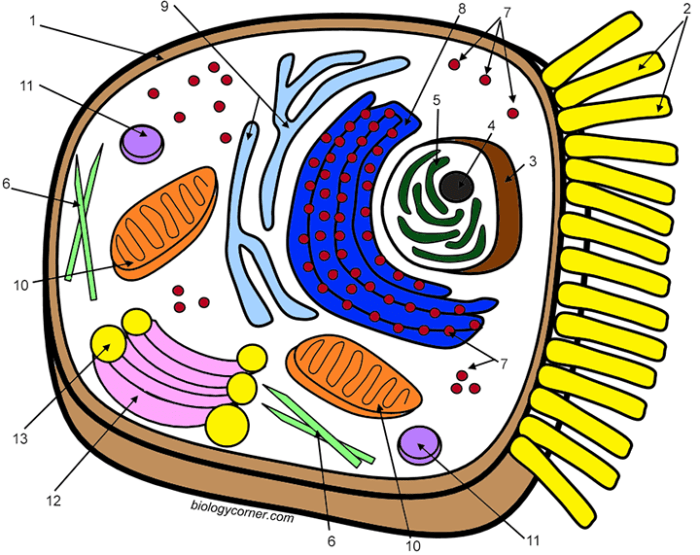Advanced Concepts (Optional): Animal Cell Reading Comprehension And Coloring

Animal cell reading comprehension and coloring – This section delves into more complex aspects of animal cells, exploring their diversity, the processes governing their growth and reproduction, and the mechanics of cell division. Understanding these advanced concepts provides a deeper appreciation for the intricate workings of life at the cellular level. This knowledge is fundamental to fields such as medicine, biology, and biotechnology.
Types of Animal Cells and Their Specialized Functions
Animal cells exhibit remarkable diversity, specializing in structure and function to perform specific roles within an organism. This specialization allows for the complex organization and coordinated activities of multicellular organisms. Different cell types are optimized for their unique tasks, contributing to the overall functioning of the body. For instance, nerve cells, or neurons, are elongated and possess specialized structures for transmitting electrical signals, while muscle cells are long and fibrous, enabling contraction and movement.
Similarly, epithelial cells form protective layers, and blood cells transport oxygen and fight infections. The variations in cell shape, size, and internal components reflect their specialized functions within the organism.
The Cell Cycle and Its Importance in Animal Cell Growth and Reproduction, Animal cell reading comprehension and coloring
The cell cycle is a tightly regulated series of events that leads to cell growth and division. It comprises distinct phases: interphase (G1, S, G2), during which the cell grows and replicates its DNA, and the mitotic phase (M phase), involving nuclear and cytoplasmic division. The cell cycle’s precise control is crucial for normal development, tissue repair, and reproduction.
Dysregulation of the cell cycle can lead to uncontrolled cell growth, a hallmark of cancer. For example, the precise timing of DNA replication and chromosome segregation during the cell cycle ensures the faithful transmission of genetic information to daughter cells. Errors in this process can result in genetic mutations and potentially lead to diseases.
Cell Division (Mitosis) in Animal Cells
Mitosis is the process of nuclear division in eukaryotic cells, resulting in two genetically identical daughter cells. This process ensures that each daughter cell receives a complete and accurate copy of the parent cell’s genome. Mitosis proceeds through several distinct phases: prophase, prometaphase, metaphase, anaphase, and telophase, each characterized by specific chromosomal movements and cellular events. During prophase, chromosomes condense and become visible.
In metaphase, chromosomes align at the cell’s equator. Anaphase involves the separation of sister chromatids, and telophase marks the formation of two new nuclei. Cytokinesis, the division of the cytoplasm, follows mitosis, completing the formation of two separate daughter cells. The fidelity of mitosis is essential for maintaining genetic stability and ensuring the proper development and function of tissues and organs.
While animal cell reading comprehension and coloring activities offer a valuable educational approach, expanding the scope to include the diverse world of aquatic life can enhance engagement. For instance, supplementing lessons with visually appealing resources like those found at aquatic animal coloring pages can reinforce learning about cell structures within a broader ecological context. This multi-faceted approach strengthens comprehension and provides a more holistic understanding of biology.
